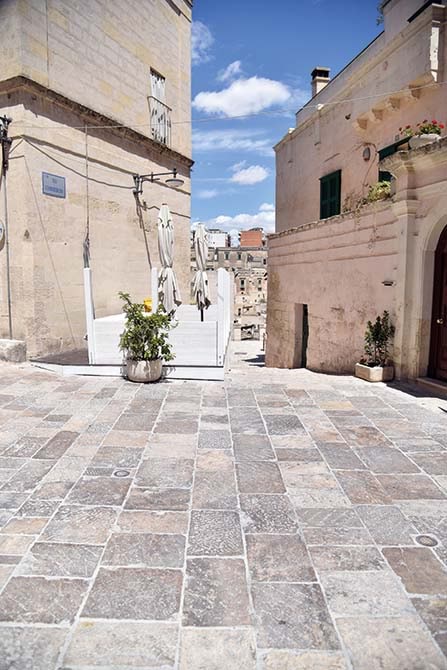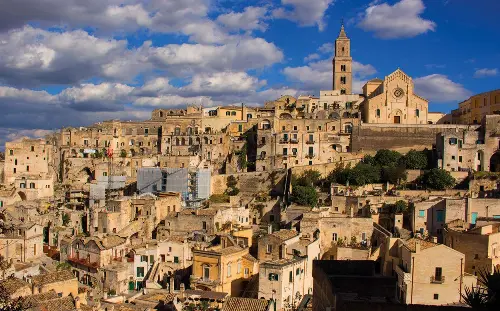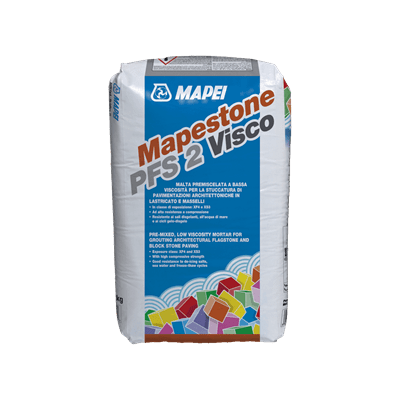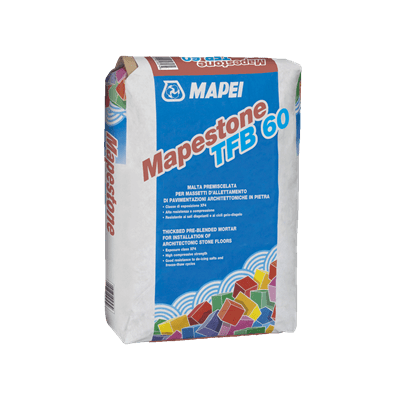
New road surfaces for Matera
In preparation for 2019, when Matera is set to become the capital of culture, the streets in the old city have been renovated.
Renovation of the road surfaces in the old part of Matera started with a project that identified the areas with a strategic value and carefully analysed their position, their significance and the technical problems affecting them. A number of streets and piazzas were chosen from within a limited area in order to maintain the right level of quality and, at the same time, remain within the economic constraints of the intervention.
Renovation of the road surfaces in the old part of Matera started with a project that identified the areas with a strategic value and carefully analysed their position, their significance and the technical problems affecting them. A number of streets and piazzas were chosen from within a limited area in order to maintain the right level of quality and, at the same time, remain within the economic constraints of the intervention.
The new surfaces were designed so as to conserve the historical significance of the existing roads – by maintaining their overall layout – in a natural continuation of materials, colours and construction methods.
Where more radical interventions were not required to keep the streets in a good state of conservation, only general maintenance work was carried out.
The piazzas and streets where the intervention was carried out (Via delle Beccherie, Piazza Sedile, Via del Corso, Via San Francesco, Via San Biagio and Piazza San Giovanni Battista) are situated in the central part of the old city and are those most frequented by the local inhabitants and tourists.
THE GENESIS OF THE PROJECT AND PLANNED INTERVENTIONS
The main aim of the project was to give a new lease of life to the streets in the old city centre without overlooking its centuries-old history, while also taking into consideration its new requirements in terms of functionality, aesthetics and safety.
Even though the streets selected for the intervention are bordered by buildings no more than one hundred years old, the roads were completely resurfaced using traditional techniques, that is, with a kind of flagstone called ”basola” made of local Trani or Apricena stone. It was not uncommon to find basalt inserts, which were probably installed to replace broken flagstones or work carried out on the substrate.
The project also included an overhaul of the various plant systems and underground systems to avoid carrying out further work in the future. The new plant systems were designed so that they could be extended at a later date and also to be more flexible, by providing more connections and installing larger mains, and to simplify maintenance work as much as possible by including manhole covers and inspection chambers.
Going into detail, the paving stones along Via delle Beccherie were removed and the ones in good condition were reused, while the damaged ones, or those with an irregular shape, were discarded. They were then re-worked so they had the same thickness, taking them from 25-40 cm down to 15 cm. This made the old paving stones compatible with the flat, reinforced concrete substrates and will prevent differential subsidence in the road surface.
Work was then carried out in Via del Corso, where the entire road surface was renovated by replacing the old concrete bricks with Apricena paving stones and demolishing, removing and rebuilding the old plant systems and underground systems. The surface of the roadway running from Piazza Vittorio Veneto up to the former Upim building was completely replaced and the road itself was raised to the same level as the pavement, and in this case, too, the old paving stones that had been removed were reused after taking them all down to the same thickness. Via San Biagio, the first part of Via Stigliani and Piazza San Giovanni Battista were all renovated with a road surface made from new paving stones.
To complete this first list of works, an intervention was carried out along the short stretch of Vico Conche by completely renovating the road surface and plant systems.
MAPEI SOLUTIONS FOR OLD ROAD SURFACES
The first intervention proposed by the designers was to renovate the paved road surface in Via delle Beccherie, the street which was the historical home of the city’s various food and grocery shops. To install the paving stones, Mapei technicians proposed using the MAPESTONE system, specifically developed for installing stone road surfaces at a lower cost and with numerous advantages.
The MAPESTONE system includes products in exposure class XF4 and complies with the requirements of EN 206-1 standards to guarantee the durability of any work carried out.
Stone road surfaces installed using this system will only require maintenance work after a number of years because they are resistant to freeze-thaw cycles, de-icing salts and rain and the mortars used do not tend to crumble and remain unchanged over the years. They also have the capacity to absorb mechanical loads and stresses caused by the passage of vehicles, including heavy goods vehicles, and dangerous hollows due to structural subsidence do not appear.
To install the large paving stones, which on average were around 7 cm thick, the product used was MAPESTONE TFB 60 pre-mixed, ready-to-use mortar, while the joints (15/20 mm wide on average) were filled with MAPESTONE PFS2 VISCO low-viscosity ready-mixed mortar.


















